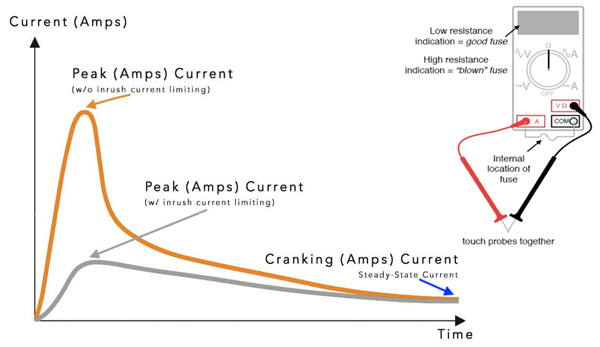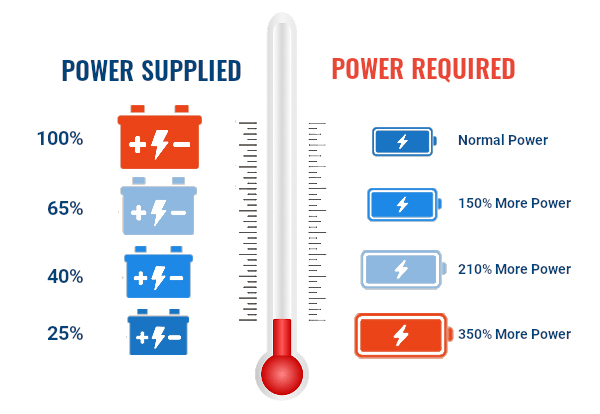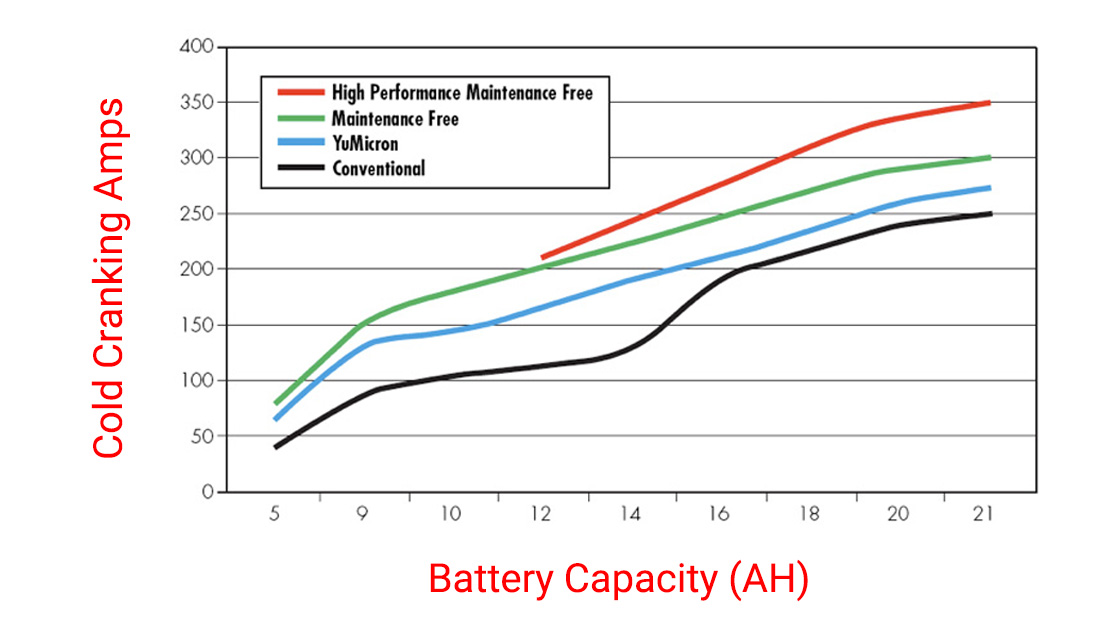Power accessories like portable car jump starters on the market usually are inconsistent in showing amperage. Therefore, many people might wonder about the difference between peak amps vs cranking amps vs cold-cranking amps jump starters.
If you’re here, then you are probably looking for a jump starter but are confused with the unfamiliar specifications when reading the product descriptions.
Don’t worry because we’re here for beginners like you. Keep reading to find out what is what and which one you should focus on when buying a portable jump starter for your car, diesel engine, gasoline engine, cigarette lighter, etc.
Related:
- How Many Amps Is A Car Battery to Ramp up Your Engine?
- Big Question Of The Day: How Many Amps To Jumpstart A Truck?
- How To Use A Jump Starter: Detailed Guideline For The Unprofessional
Peak Amps Vs Cranking Amps Vs Cold Cranking Amps Jump Starters
When a battery life ends, the jump starter offers an initial boost to start the engine. This current will make the motor of the machine begin to crank.
While the peak power flow can result in some problems, the cranking current is more stable and works as a safety feature to avoid troubles caused by the peak current. This is why a portable jump starter has peak amperage and cranking amperage numbers as its necessary specifications.

Peak Amps Vs Cranking Amps chart
What are peak amps?
Peak amps show the maximum electrical current that the power accessories can push out initially in a short time. In other words, it’s like the peak power numbers a starter discharge to crank your engine.
In theory, a 1700 peak amp jump starter like the Clore Automotive Jump-N-Carry is almost double the strength of an 800 peak amp jump starter like the TackLife T8 800A Peak 18000mAh Lithium-Ion Car Jump.

What Is Cranking Amperage?
Cranking amps, usually written as CA, define the amount of power that a lead-acid battery or lithium-ion jump starter delivers at 32°F (0°C) for 30 seconds (for a 12-volt DC power outlet). This cranking amperage is the real number of amperes you need to start your engine in most climates except winter.
What’s more, this determines the power to make the power banks rotate while retaining adequate voltage to activate the ignition system and fire up the engine.
What Is Cold Cranking Amperage?
It’s challenging to start an engine during winter since the oil becomes thicker and the motor becomes more movement-resistant. In such situations, only the CA rating is not enough. You need to consider Cold Cranking Amps (CCA) to have a closer look at the starter’s charge level.
CCA refers to the amount of electricity a portable jump starter produces at 0°F (-17.8°C) for 30 seconds while maintaining at least a voltage of 7.2 (for a 12V battery).
This measure is similar to CA but for cold temperatures. It is usually used to define a battery jump starter’s ability to wake up an engine in cold weather. The CCA will increase if the internal battery has more and thinner plates thanks to the greater contact area.

Cold Cranking Amps Temperature chart
What is mAh?
In addition to the 3 amperage numbers, mAh is another definition you should know. Some manufacturers listed it in their products’ descriptions alongside peak, CA, and CCA.
A mAh, or a milliampere-hour, is 1000th of an Ah (ampere-hour). mAh is more common in real-life applications than Ah. It describes the energy charge that a battery will hold. Bigger mAh means the time gap between the full charging point and running out of battery point of many mobile devices is longer.
Which specification is the most important?
In general, all 3 ratings refer to the current that a battery jump starts the power devices. The higher they are, the stronger the starting power of your equipment.
However, you’ve already learned their definitions from the above section. This part will tell the differences when comparing peak amps vs cranking amps vs cold-cranking amps jump starters.
While peak amps are the maximum numbers theoretically, CA and CCA ratings are the actual and stable currents that a battery jump starter pushes out.
Some say that peak amps are only for marketing purposes since they are the most impressive to attract customers’ attention. For instance, the GOOLOO G2000 Lithium-Ion Battery with a USB port featuring 2,000 peak amps and 28,800 mAh is widely known as one of the world’s strongest car power banks.
GOOLOO 2000A Peak SuperSafe Car Jump Starter
But don’t look down on the peak amp; it exists for a reason. It helps you estimate the general power of the equipment you are about to buy. Specifically, if you have more than one vehicle, you can’t buy several power accessories for each. You only have to buy one car battery jump starter for all your vehicles.
In this case, the peak power rating will give you a quick overview to determine which starter can launch all the vehicles, including the largest one.
Don’t worry about overloading since the safety feature makes sure a sufficient amount of power output. 1000 peak amps jump starters are commonly seen on the market as they can start a large majority of typical engines. Most of them have overload protection that meets the industry standard. You can check out the Clore Automotive mentioned above.
On the other hand, the temperature is the main factor in telling CA and CCA apart and deciding which one is suitable according to your situation and demand. The CCA is measured at about -18°C, while the CA is only measured at 0°C.
In a nutshell, all of the 3 measures should be your basis. Still, to keep everything simple, we suggest looking at the CA first since it’s the actual power to start your battery. In contrast, CCA is better for those living in a cold climate.
Besides, the CCA rating is more meaningful than others when your battery is about to die. It will require more power output than usual. In the event of a dead battery, CCA jump starters have the best probability of saving the battery life on a single charge.
Bottom Line
We hope this article will offer a better reference and guidance about peak amps vs cranking amps vs cold-cranking amps jump starters. They are all integral specifications of a battery jump starter. Each has its own perks; you should determine your personal condition before leaning toward one of the 3 amps to make a purchase.
However, the jump-starting concept is more about developing an initiating battery in over 15 seconds than the necessary power of a deep-cycle battery per amp-hour.
Therefore, we don’t recommend using battery power accessories for a larger vehicle that needs more power output or heavy-duty appliances such as solar energy. The battery capacity might not be enough to power them on a single charge.
WHAT'S NEW
The best AGM battery chargers will be the ideal option to revive your flat battery without relying on professional help. These handy high-tech chargers are extremely beneficial because they offer...
The Genius Boost GB40 is popular because of its ability to help boost your vehicle when it has battery issues. Many of our customers wonder why the Noco GB40 can work greatly like so. So, we have...


